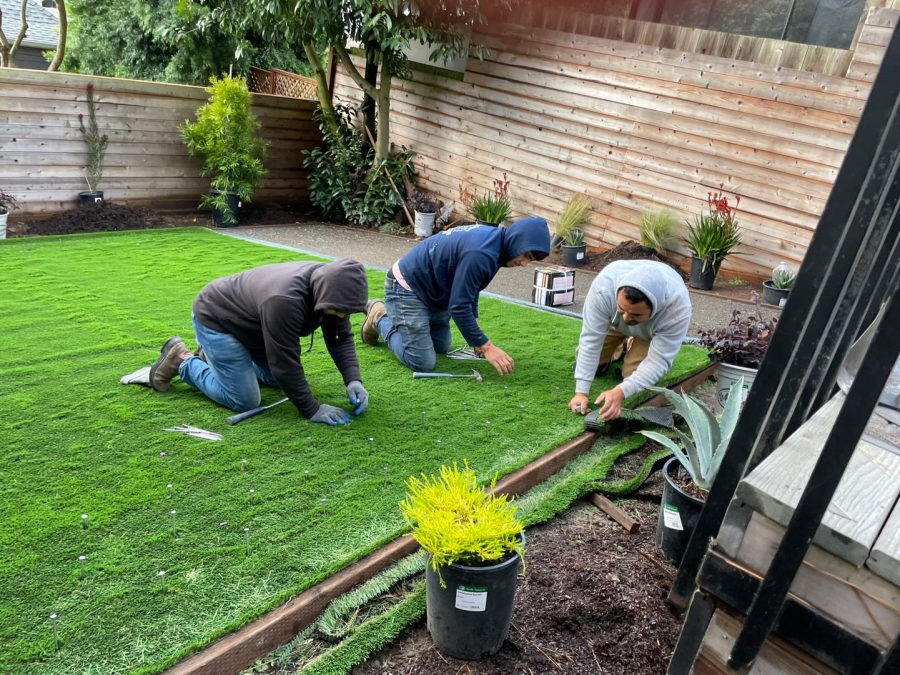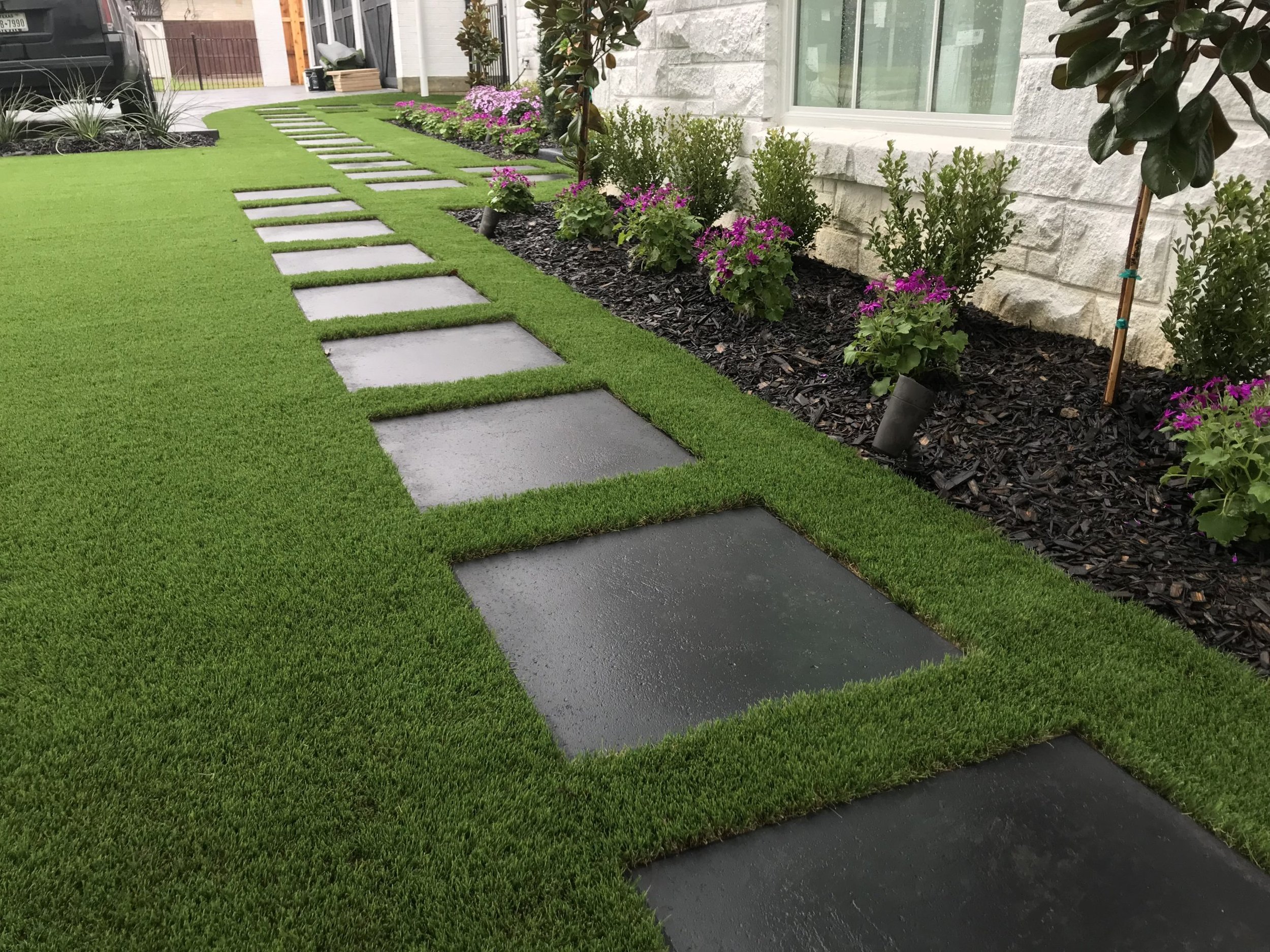Explore the Environmental Advantages of Opting for Synthetic Grass Solutions
The fostering of artificial lawn services offers an engaging chance to resolve pushing environmental challenges. By dramatically minimizing water use and reducing the application of unsafe chemicals, these choices not only advertise sustainable landscape design however likewise secure neighborhood communities.
Water Preservation Advantages
One of the most substantial advantages of fabricated grass is its capacity to preserve water. In contrast, fabricated turf does not need watering, substantially lowering the overall demand for water sources.
By getting rid of the requirement for regular watering, synthetic grass adds to lasting landscape methods and helps mitigate the environmental impact of excessive water intake. The conservation of water extends to the decrease of drainage, which can lead to dirt disintegration and river air pollution.
In addition, the installation of synthetic grass enables districts and property owners to allot water sources more efficiently, concentrating on crucial uses such as alcohol consumption water and farming. The shift in the direction of synthetic grass not only advertises liable water use yet likewise straightens with more comprehensive environmental goals targeted at protecting all-natural sources.
As neighborhoods increasingly focus on sustainability, the water preservation benefits of fabricated lawn provide a compelling situation for its adoption in residential and business landscape design tasks.
Minimized Chemical Usage
The shift to synthetic grass considerably decreases the dependence on chemical therapies generally made use of in natural lawn maintenance. Typical lawn management commonly entails the application of herbicides, fertilizers, and chemicals to promote development and control bugs. These chemicals can position risks to human health, local wildlife, and the atmosphere, adding to soil and water contamination.
In comparison, fabricated turf eliminates the requirement for these dangerous substances. By reducing the launch of artificial compounds right into the ecosystem, synthetic lawn advertises healthier soil and water systems.
Additionally, the lack of chemical overflow connected with artificial lawn installments assists shield neighborhood waterways from pollution, supporting marine life and preserving biodiversity. Arizona turf. As neighborhoods increasingly prioritize lasting methods, going with synthetic grass provides a feasible option that lines up with ecological preservation objectives. With this change, residential property owners can appreciate lavish environment-friendly spaces without compromising eco-friendly health and wellness, leading the way for an extra lasting future
Lower Carbon Impact

Furthermore, the installment of synthetic grass can lead to substantial water conservation. Natural grass require significant amounts of water for irrigation, which not only contributes to the carbon impact related to water removal and therapy but also stress regional water resources. On the other hand, fabricated grass needs minimal maintenance, needing no watering, thus dramatically lowering water use and its linked power prices.
Furthermore, the long life of synthetic grass adds to its decreased carbon influence. With a life-span of as much as 15 years or more, the requirement for frequent substitutes is reduced, leading to less waste and lower power intake in manufacturing and dealing with traditional lawn alternatives. In general, synthetic grass presents a sustainable alternative for eco conscious landscaping.
Environment Conservation
Habitat conservation is a crucial factor to consider in the argument over landscaping selections, particularly when contrasting synthetic grass to all-natural grass. All-natural lawn yards typically need comprehensive maintenance, including the usage of herbicides, pesticides, and fertilizers, which can detrimentally influence local ecological communities. These chemicals can seep right into the dirt and waterways, hurting native vegetation and animals and disrupting regional habitats.
Man-made try this web-site lawn gets rid of the requirement for hazardous chemicals, thus safeguarding neighboring wild animals and preserving the integrity of surrounding environments. The setup of man-made lawn can lead to the conversion of previous grass locations right into even more biodiverse landscapes, such as pollinator gardens or native plant locations, which can support neighborhood wild animals.
Inevitably, the transition to synthetic grass not just conserves water and decreases maintenance initiatives but additionally promotes a more unified partnership between human tasks and the natural atmosphere, promoting environment conservation at the same time.
Long-Term Sustainability
Long-term sustainability is a critical consider reviewing the benefits of artificial lawn over typical grass lawns. One of one of the most substantial benefits of synthetic grass is its durability; it can last as much as 15-20 years with marginal upkeep, whereas all-natural lawn needs constant reseeding and replacement. This durability decreases the need for constant resources, such as water, fertilizers, and chemicals, which are vital for keeping a healthy grass yard.
Additionally, artificial lawn contributes to a decrease in carbon emissions connected with lawn treatment devices. Conventional lawns usually require gas-powered mowers, trimmers, and blowers, every one of which add to air pollution. Arizona turf. On the other hand, fabricated turf removes the demand for such equipment, promoting a cleaner setting
Moreover, the production of synthetic grass significantly makes use of recycled materials, improving its sustainability account. As manufacturers embrace green methods, the ecological footprint of synthetic grass proceeds to diminish.

Verdict
The adoption of synthetic grass solutions offers significant ecological benefits, consisting of substantial water preservation, helpful site reduced reliance from this source on hazardous chemicals, and a lower carbon footprint. Furthermore, artificial turf aids in maintaining all-natural environments by decreasing land disruption and promoting long-lasting sustainability with using resilient materials. Jointly, these elements underscore the possibility of synthetic grass to add favorably to ecological health and wellness and supply a practical choice to traditional landscape design techniques in a progressively resource-conscious globe.
In contrast, man-made lawn does not need watering, considerably minimizing the total need for water resources. By decreasing the release of synthetic compounds right into the environment, man-made turf promotes healthier dirt and water systems.
In addition, the installation of man-made grass can result in considerable water conservation. In contrast, artificial turf needs very little maintenance, calling for no watering, consequently substantially minimizing water usage and its connected power costs.
